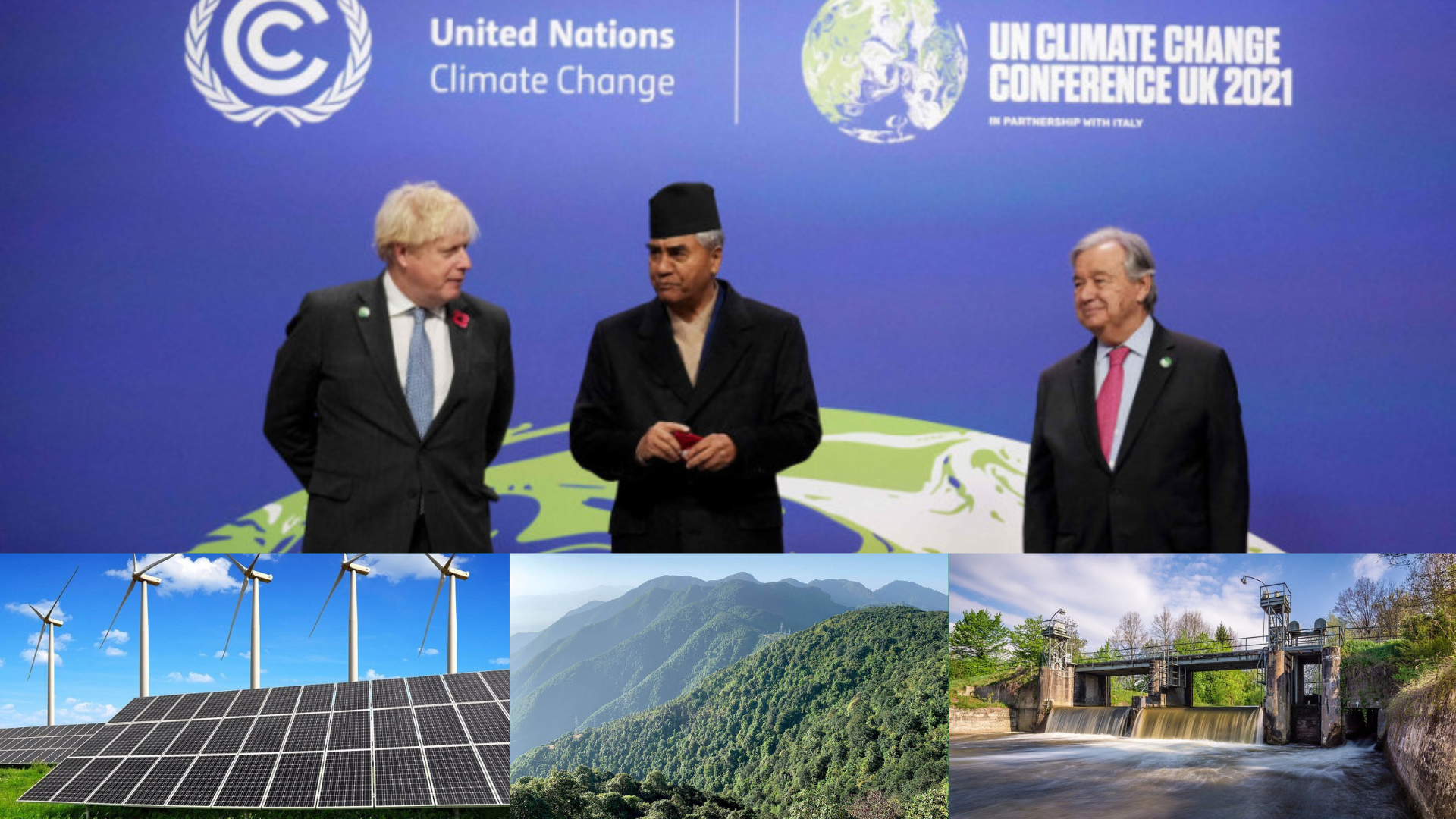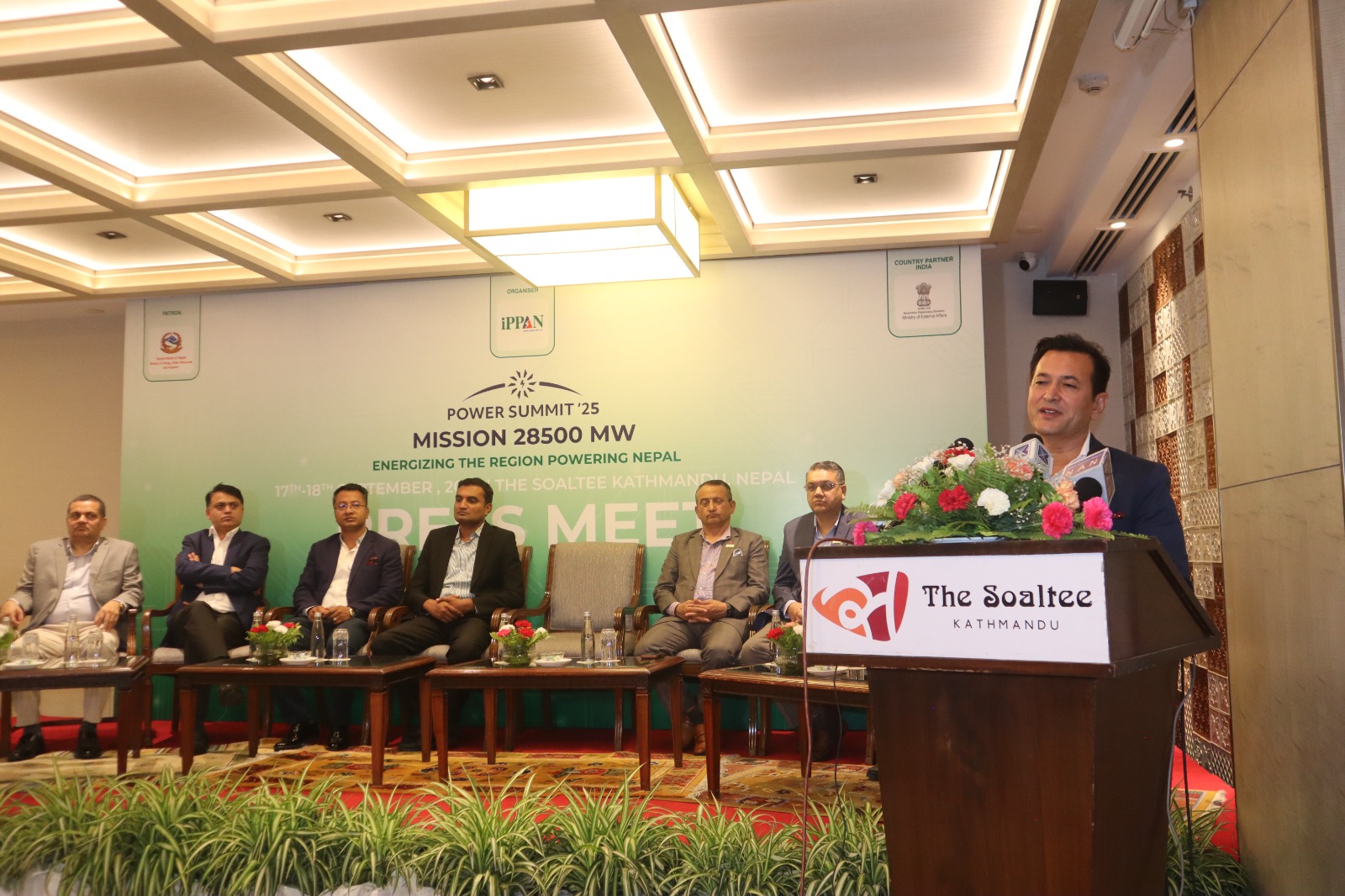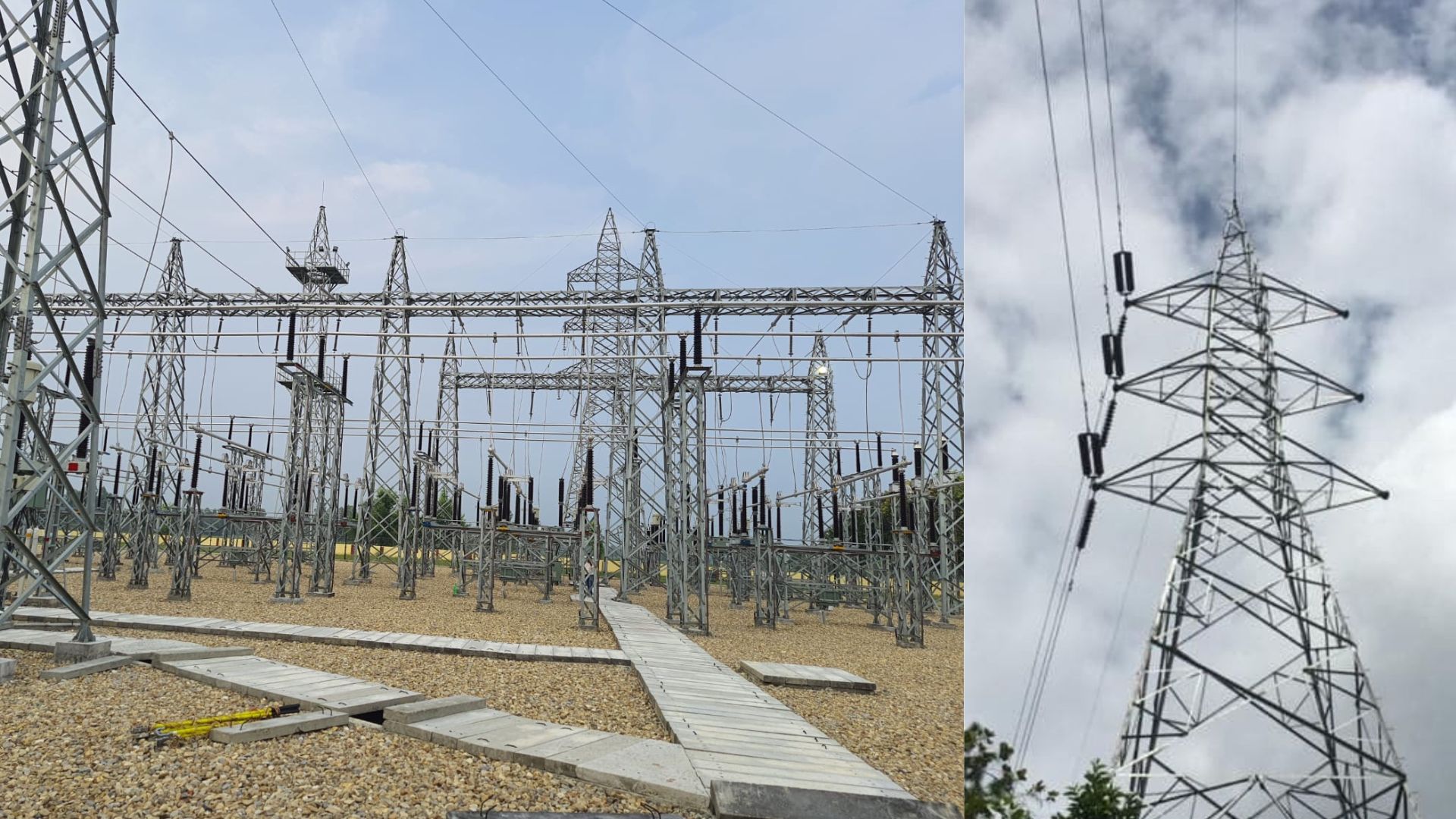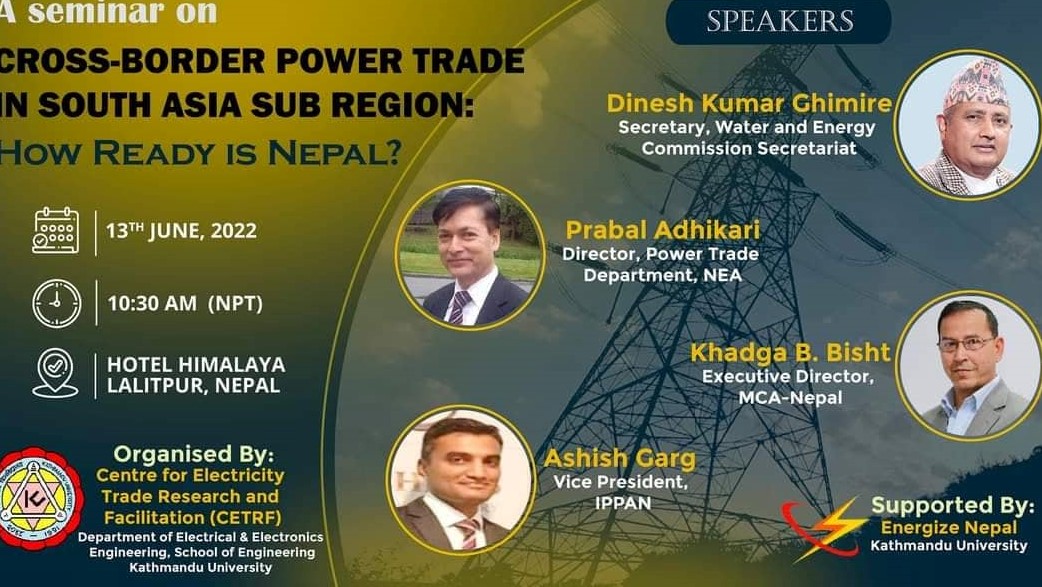
 KATHMANDU: Addressing the COP-26 Conference in Glasgow, Scotland nine months ago, Prime Minister Sher Bahadur Deuba expressed his commitment to achieving zero carbon emissions within the next 23 years.
KATHMANDU: Addressing the COP-26 Conference in Glasgow, Scotland nine months ago, Prime Minister Sher Bahadur Deuba expressed his commitment to achieving zero carbon emissions within the next 23 years.

“The strategic action plan and implementation preparation according to Nepal’s commitment to net carbon emissions have not been visible even after nine months have passed. In this situation, there is no possibility of achieving the ambitious goal”
Even after nine months, the government has failed to come up with a concrete action plan to fulfill the commitment made at the international forum. In October 2021, the government introduced a long-term strategy for net zero emissions in 2050. However, since this target was introduced for five years additional period, experts say that the government does not have a fresh implementation plan to achieve the target by 2045.
Upreti states that there is no possibility of achieving the ambitious goal due to weak preparation.Even though plans are made to control the fire which has been raging on a large swathe of forest land every year Nepal has not yet devised to check such incidents. “We have not found any synchronization between the goals for net zero emission and status of preparation for implementation,” – adds Upreti.
The concept of zero carbon emission was brought forward after scientists were convinced that the average temperature of the earth will increase by 2 degrees by 1993 if the current greenhouse gas emissions are not reduced. This concept has been moved forward to implement the ‘Paris Agreement’ signed by 197 countries that are parties to the United Nations Convention on Climate Change in Paris, on December 12, 2015.
Benefits for Nepal
Under Climate Finance, the Least Developed Fund and the Adaptation Fund are operating. The COP-26 summit has announced that the amount going to both these funds will be doubled. At the COP-26 conference, developed countries committed to providing USD 100 billion for climate adaptation programs by 2025. It seems that developing and less developed countries including Nepal will benefit economically from this global fund.
In terms of climate adaptation, there will be a double benefit in economic and technical terms for the upliftment of the communities that are at risk of climate change’s adverse impact. As it was announced for the first time that even certain groups that are at risk of climate change will benefit, it seems that Nepal can benefit.

The role of the private sector in the production of renewable energy is also considered important in order to contribute to the reduction of carbon emissions.” As per commitment, we can replace fossil fuel only by increasing hydropower production”
Dangi says that private energy producers are ready to meet the government’s goal of reaching net zero emissions.
When we reach zero net emission, financial support from various funds will definitely increase. “With the greater commitment for global funds the country becomes prosperous and economic development is created in the country” adds Dangi.
Challenging goals
In order to limit the temperature of the earth to 1.5 degrees, it seems that the current carbon emissions need to be reduced by 45 percent. As far as Nepal is a developing country, it is a big challenge to fulfill the goals announced by the government.
Joint Secretary of the Ministry of Energy, Water Resources, and Irrigation,Madhu Prasad Bhetuwal accepts that there is a big challenge in implementing the goal of net zero emission in Nepal in terms of cost.
A significant amount of investment is required to achieve ambitious goals such as the reduction of green gas and net reduction throughout the implementation period. Demand-side investment, conversion investment, and non-energy investment are included in green hydrogen production costs. The cost required for this has been estimated based on the constant dollar value of the year 2000. In line with this, the cost is estimated at USD 4.20 billion from 2021 to 2030, USD 7 billion from 2031 to 2040, and USD 17.50 billion from 2041 to 2050.

“I don’t think we have thought about the alternatives to diesel and petrol so far, “Coal and other fuel options for the industry are not discussed. Driving 2/4 of electric vehicles alone will not reach the target
Also, there is a big challenge in implementing this goal even if there is no coordination between the ministries that are responsible for implementing the strategy.
Thapa also agrees that it is difficult to reach the goal of net zero emissions given the level of preparation in Nepal.
The government’s own claim
Although the Ministry of Forestry and Environment has set a sectoral target to look into this issue, it is not possible to make a plan with the actions to be taken by the relevant ministries and agencies and their costs. The relevant government officials claim that the target can be achieved with the current preparations.

“The ministry has been emphasizing producing clean energy from water sources to replace imported petroleum products in order to contribute to the reduction of carbon emissions”
“For that, promoting electric vehicles, electric stoves and gas is our priority,” – said Joint Secretary Bhetuwal.
According to Bhetuwal, emphasis has been placed on renewable energy production and consumption to reach the government’s target of net zero emissions.

Buddhi Paudel, stated that the government plans to control deforestation and expand forest area to 45 percent of the land by 2030 to meet the goal of net zero emissions.
“The government is working in line with the plan to reduce carbon emissions from the climate adaptation program by applying technology to meet the target”
He says that work will be done by preventing forest destruction, preventing fires, and increasing the level of sustainable forest management for the protection of the forest area.

Vijay Singh, Resident Representative, United Nations Development Programme says that the United Nations Development Program (UNDP) has helped to plan how much carbon can be emitted from which areas to meet Nepal’s net zero emission goal.
“A plan with long-term strategic goals has been prepared to bring Nepal to net zero carbon emissions. Being a development partner, UNDP will provide support in technology and financial resource management to help Nepal achieve net zero emissions”
What are the goals of net zero emissions?
For the purpose of fulfilling the ambitious goal of net zero emissionNepal has presented a detailed Nationally Determined Contribution (NDC) to diminish the impact of climate change by the year 2030 as per the provisions of the Paris Agreement. For net zero emission, energy, industry, transport, trade, agriculture, forestry, and other sectors have been set as targets.
Energy: As the consumption of petroleum energy is more than electric energy in Nepal, the production and consumption of renewable energy have been emphasized to reach the net zero carbon emission target. The Ministry of Energy, Water Resources, and Irrigation have set a target of reaching 15,000 MW of the country’s electricity capacity by the year 2030 to contribute to the replacement of petroleum energy.
The net zero carbon emission strategy has emphasized the need to maximize electricity generation from hydropower and other renewable energy sources. It is projected that 50,000 MW of electricity will be required by the year 2050 to meet this target. It is estimated that it will be possible to limit carbon emissions through renewable energy to 1.7 million metric tons by 2030 and 4.4 million metric tons by 2050.
Use of industrial processes and products: Due to the lack of industrialization compared to developed countries, the carbon emissions from the use of industrial processes and products in Nepal are now relatively low. However, as the number of industries in the country is increasing, it is certain that the emissions from this sector will also increase.
Transport: Private and government vehicles plying on the roads of Nepal run on petroleum fuel. The government has a strategy to convert these public and private vehicles into electric ones. Nepal has also set a target of electrifying 25 percent of private vehicles on the road by 2025. Likewise, it is said that the sales of electric vehicles will increase by 90 percent by the year 2030. This will contribute to the government’s goal of net zero carbon emissions.
Business: To reach net zero emissions, the business sector is also going to be completely converted to electricity-based. By the year 2030, by electrifying the business sector, carbon emissions can be reduced by up to 1.2 million metric tons. Emissions from the business sector are projected to reach net zero by 2030.
Agriculture: Carbon emissions are increasing due to chemical fertilizers and other chemical substances used in agriculture. In order to reduce the carbon emissions from the agricultural sector, a strategy has been taken to practice good farming practices, to use organic fertilizers instead of chemical fertilizers.
Different species of rice that can be planted in dry land and mud that produce more and corn species that can withstand high temperatures are recommended. Also, it is recommended that farmers plant 7 types of wheat. According to the second NDC 2020, 48,000 farmers will benefit from the increase in production from improved seed varieties. Carbon emissions will be minimized by rearing good-natured animals that give more production towards animal husbandry in the agricultural sector.
Forest and other land use: The role of forest area and tree planting is important to reach net zero carbon.
Garbage: Garbage produced in cities and rural areas is also emitting carbon. Conducive to control it, the government has a strategy of not throwing waste randomly, separating digestible and non-digestible waste, and putting it to use.
Energy trade: Nepal can contribute to reducing carbon emissions by increasing renewable energy production and trading it. By the year 2030, the government plans to increase the installed capacity to 15,000 MW, consume 10,000 MW within the country and export the remaining 5,000 MW to neighboring countries. It is estimated that petroleum imports will decrease by 15 percent when the installed capacity reaches 15,000 MW.
What is Net Zero Emission?
Many people may think that net zero carbon emission means reducing carbon dioxide emissions to zero in the atmosphere. This understanding is not correct.Net zero carbon emission is the state of carbon dioxide emissions currently occurring in the atmosphere and keeping it stable without allowing it to increase.
To be clearer, creating an economy that does not use petroleum products by increasing the consumption of renewable green energy is called net zero carbon emission. In order to achieve the goal of reaching net zero emissions by the year 2045, which has been declared by Nepal, the use of fuel and goods that increase carbon emissions should be minimized. As consumption of petroleum, coal, and gases among others. emits greenhouse gases and causes global temperature increase, it is necessary to reduce petroleum fuel consumption by increasing the use of renewable energy.
The number of trees should be increased by planting trees. If an industry can absorb and manage all the carbon it emits, it will be easy to meet the goal of net zero emissions. For that, the industry can contribute to managing carbon emissions by planting trees in the surrounding area.
Why is there a debate on net zero emissions?
The debate about climate change and its effects was first held in 1972 in Stockholm, Sweden. The conference, which was attended by 119 countries of the world, gave the approval to make World Environment Day on June 5. Since then, debates on reducing carbon emissions have been taking place at climate conferences from time to time. Experts say that if the current global greenhouse gas emissions are not reduced, the temperature of the earth will increase by 2 degrees by 2050. Experts have been warning that the cities sitting on the islands in the middle of the sea will end their existence due to the sinking of the cities in the middle of the sea because of the increase in the sea level due to the melting of the ice.









